Pennsylvania sedge (
Carex pensylvanica) is a low-growing, grass-like native sedge that thrives in dry shade. This April-flowering sedge provides early-spring interest in the shade garden, and on occasion its flowers will attract flower-visiting insects interested in pollen.
This sedge forms small colonies through spreading rhizomes and can be used as a ground cover under trees or as a transitional plant between a pathway and a naturalized planting. Combine this sedge with any shade-tolerant native perennial, allowing it to weave around plants, filling the voids.
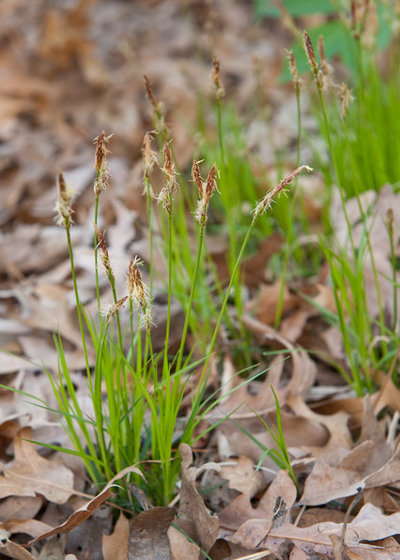
Holm Design & Consulting LLC
Botanical name: Carex pensylvanicaCommon name: Pennsylvania sedge (Penn sedge for short)
Origin: Native to eastern North America from the Dakotas eastward to Maine in the north, and Arkansas eastward to Georgia in the south; in Canada it is native to Manitoba, Ontario and Quebec
Where it will grow: Hardy to minus 40 degrees Fahrenheit, or minus 40 degrees Celsius (USDA zones 3a to 7a; find your zone)
Typical plant communities: Dry woodlands and woodland edges
Soil requirement: Dry to mesic, sand to loam soil
Light requirement: Partial shade to shade
Mature size: 6 to 12 inches tall and 6 inches wide
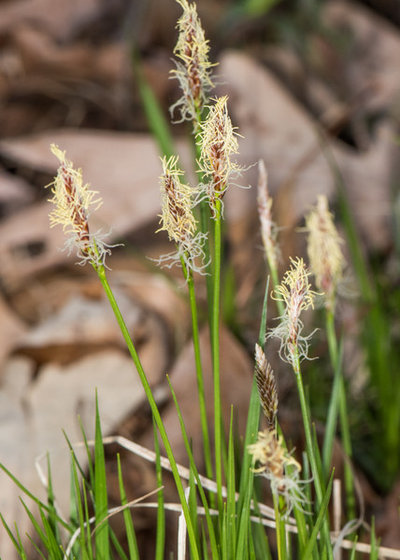
Holm Design & Consulting LLC
Benefits and tolerances: Tolerates dry conditions and shade
Seasonal interest: Flowers in early April; this wind-pollinated plant produces pollen from the male flowers, and the cream-colored pollen provides interest in spring
When to plant: Spring or fall; potted plants are available from most native-plant nurseries in areas where it occurs
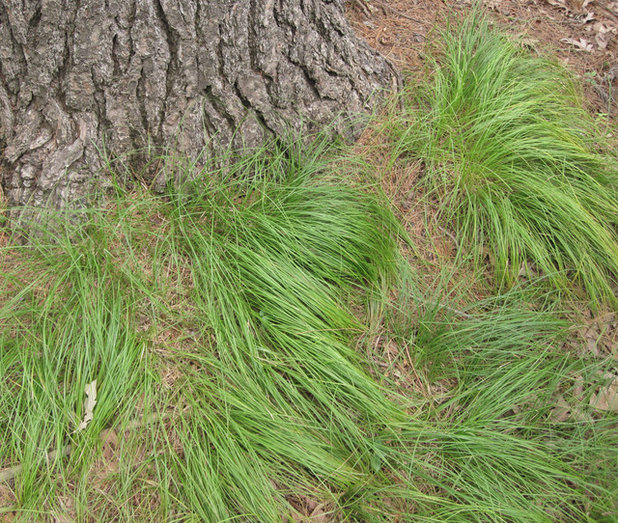
Holm Design & Consulting LLC
Distinguishing traits. Pennsylvania sedge has a soft texture, bright green narrow leaves and creamy yellow flowers in early spring. It spreads by shallow rhizomes and naturally forms dense clusters or masses. Here Pennsylvania sedge is seen growing next to the trunk of a large white pine tree.
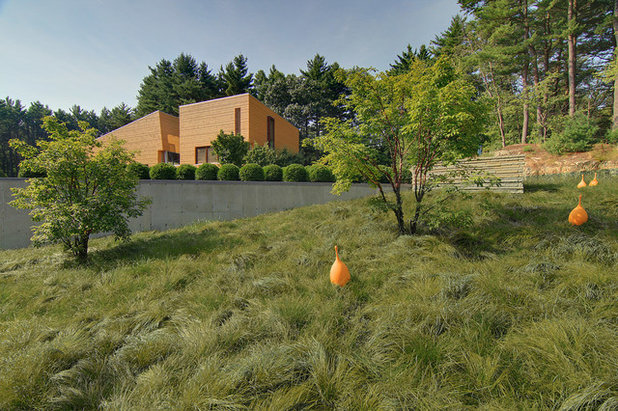
C2 | Studio Landscape Architecture
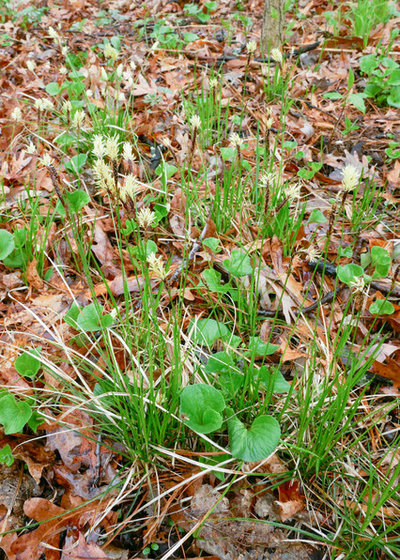
Holm Design & Consulting LLC
How to use it. Use Pennsylvania sedge in any dry, wooded shade garden or naturalized along a woodland edge, or allow it to weave through other woodland wildflowers. You could also mass this plant under a tree in dry shade, which would provide a similar look to a lawn. It does not need to be mowed, and the bright green leaves naturally drape to give it a soft appearance.
Combine Pennsylvania sedge with other shade-tolerant native perennials, including Virginia waterleaf (
Hydrophyllum virginianum), Jacob’s ladder (
Polemonium reptans), downy yellow violet (
Viola pubescens), twoleaf mitrewort (
Mitella diphylla), bloodroot (
Sanguinaria canadensis), largeflower bellwort (
Uvularia grandiflora), early meadow-rue (
Thalictrum dioicum), longstyle sweetroot (
Osmorhiza longistylis) and zigzag goldenrod (
Solidago flexicaulis).
Shown: Pennsylvania sedge growing among violets in a woodland border.
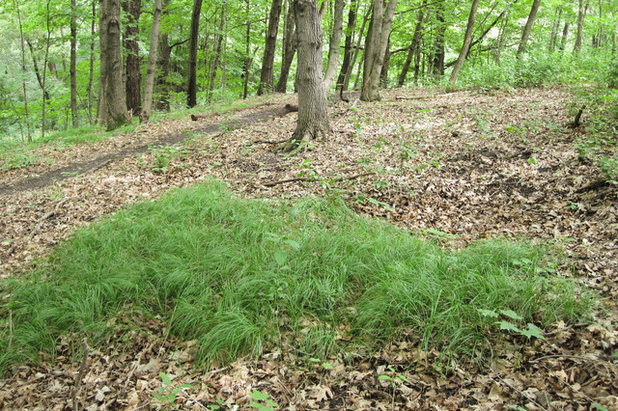
Holm Design & Consulting LLC
Planting notes. This is a rhizomatous plant and spreads by forming small colonies. It is very difficult to grow from seed (if at all), so only potted plants are available for sale. Existing plantings can be divided and replanted to propagate more plants.
Shown: A naturally occurring cluster of Pennsylvania sedge in a woodland understory
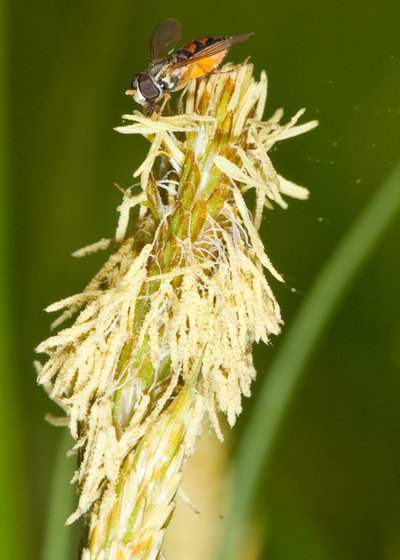
Holm Design & Consulting LLC
Pollinator notes. Pennsylvania sedge is a wind-pollinated plant, but flower-visiting insects — including syrphid flies, beetles and lacewings — occasionally can be observed feeding on the male flower’s pollen.
Shown: A syrphid fly visiting the male flowers for pollen





